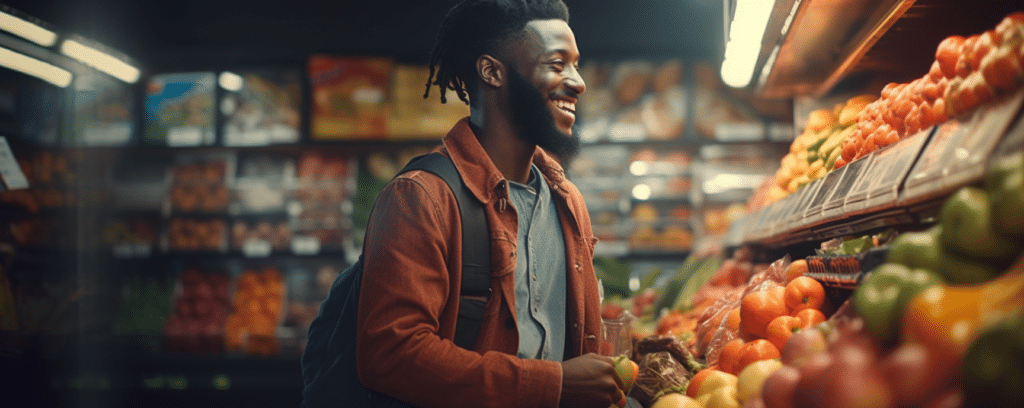You may already know that the Supplemental Nutrition Assistance Program, or SNAP (also Food Stamps), helps families buy groceries.
But this program is designed to do more than fill your shopping cart. It aims to improve your overall well-being, from reducing stress about putting food on the table to allowing you to buy healthier options for your family. While SNAP is often seen primarily as a food assistance program, its benefits can ripple into various areas of your life.
🔔 Heads Up: This is a general guide to help you navigate the SNAP landscape. Rules and regulations can change, so for the most current and specific information, consult the official SNAP website.
What Exactly is SNAP?
The Supplemental Nutrition Assistance Program, better known as SNAP, is a federal assistance program in the United States. It’s designed to help low-income individuals and families afford groceries. Once you qualify, you receive an Electronic Benefits Transfer (EBT) card, which is pre-loaded every month with a certain amount of money to spend on food.
Quick Facts
- Eligibility: Your qualification for SNAP is primarily based on your income and the number of people in your household. But other factors, like expenses and whether or not you have a disability, can also affect your eligibility.
- Food Variety: One of the misconceptions about SNAP is that it's only for buying canned goods or processed foods. That's far from the truth. SNAP allows you to purchase a wide range of items, including fresh fruits, vegetables, and even meat.
- Where to Use: You can use your SNAP benefits in most grocery stores, and some programs even allow for its use in online shopping. Additionally, some farmers' markets are starting to accept EBT cards, which means you can support local businesses while also taking care of your family’s nutritional needs.
📕 Quick Story: Maria was initially hesitant about applying for SNAP. She worried that the program might be too complicated or that it would only cover processed foods. But once she took the plunge, she found that not only was the application process straightforward, but the program also covered a broad range of nutritious foods. This significantly improved the quality of meals she could provide for her family.
The Hidden Perks of SNAP
You might be thinking that SNAP is just about putting food on the table—and while that's a big part of it, there's more to the story. The program actually offers a variety of hidden perks that can make a real difference in your life.
Mental Wellness
Financial stress is a burden nobody wants to carry, especially when it comes to something as essential as feeding your family. SNAP can alleviate some of this stress. Knowing that you have a set amount of money dedicated to your grocery budget each month can bring peace of mind. It allows you to plan meals without the cloud of financial uncertainty hanging over your head. The relief from this aspect of financial worry can even have positive effects on your mental well-being.
⭐️ If you're already using SNAP, there's a good chance you might be eligible for other community programs. Some of these might include Women, Infants, and Children (WIC) benefits, or free and reduced-price school meals for your children.
Physical Health
It's no secret that eating nutritious food is crucial for maintaining good health. With SNAP benefits, you're not limited to low-quality or unhealthy food options. In fact, the program encourages you to buy balanced meals, which can include fresh fruits, vegetables, and lean meats. So, while SNAP is providing financial assistance, it’s also laying the foundation for better physical health by allowing you to afford a well-rounded diet.
Social Connections
While it might not be the first thing that comes to mind, SNAP can help you forge social connections, too. For example, many local farmers' markets now accept EBT cards. This not only allows you to buy fresh, local produce, but also offers an opportunity to engage with your community. It's a way to learn about local agriculture, interact with neighbors, and even make friends.
Educational Programs
Believe it or not, SNAP can be your ticket to gaining new skills. Some states and local organizations offer educational courses that are available at a reduced cost or even for free to SNAP recipients. These courses can range from cooking nutritious meals on a budget to basic computer skills. By taking advantage of these opportunities, you're not just meeting immediate needs but also investing in your future.
🔥 Quick Tip: Don't overlook community events, workshops, or local programs that provide additional perks for SNAP recipients. These can include cooking classes, community gardens, or even budgeting workshops tailored to families receiving SNAP benefits.
Emergency Assistance
Life is unpredictable, and sometimes emergencies happen that can stretch your budget to its limit. In some situations, SNAP can offer emergency benefits, speeding up the application process or providing additional funds to help you through tough times. This safety net can be invaluable, especially when facing unexpected hardships like natural disasters or family emergencies.
Transportation Benefits
Getting to the grocery store can sometimes be a challenge in itself, especially if you don't have a car or live in an area with limited public transportation. Some communities offer transportation benefits specifically for SNAP recipients, such as discounted bus passes or rideshare vouchers. This ensures that you can actually get to the places where you can use your SNAP benefits, making the program even more accessible and useful.
📕 Jim had been reluctant to use SNAP at first, feeling it carried a stigma. But when he used his EBT card at a local farmers' market, not only did he get access to fresh produce, he also found a welcoming community. This positive experience helped change his perspective on SNAP, realizing it could also act as a gateway to valuable community resources.
Debunking Common SNAP Myths
Misconceptions about SNAP are everywhere, and they can discourage eligible individuals from taking advantage of this valuable program. Let's set the record straight on some of the most common myths.
Myth 1: SNAP is Only for Unemployed People
One of the biggest misunderstandings about SNAP is that it's only for those who are unemployed. In reality, many recipients are working but still struggle to make ends meet. The program is designed to provide support to low-income families, whether they have a working member or not.
Myth 2: SNAP Benefits Are Extremely Limited
Some people think that SNAP benefits only cover the basics, like bread and milk. But that's not the case. You can buy a variety of food items, from fresh produce to meat and dairy. Some states even allow SNAP benefits to be used for prepared hot meals, expanding your options significantly.
Myth 3: Using SNAP is Complicated and Time-Consuming
The thought of a long, complicated application process can be daunting. However, many states have streamlined the SNAP application, and there's a wealth of online resources to guide you through it. Plus, once you're approved, managing your benefits is often as simple as checking an app on your phone.
🔥 Quick Tip: Always check your eligibility online before assuming you don't qualify for SNAP or related programs. Many online calculators can give you an estimate of the benefits you might receive.
Frequently Asked Questions (FAQs) About SNAP
You've got questions, and we've got answers. Here are some of the most commonly asked questions about SNAP, tackled head-on.
How Long Does It Take to Get Approved for SNAP?
The typical timeline for SNAP approval is about 30 days, but this can vary depending on your state and specific circumstances. If you're in an emergency situation, you might be able to expedite the process and receive benefits sooner.
Can I Use SNAP Benefits in Different States?
Yes, you can! Your SNAP benefits aren't restricted to the state where you applied. Your EBT card can be used in any state at approved locations, making it convenient for travel or if you move to a different state.
What Happens if I Don’t Use All My SNAP Benefits in One Month?
Good news! Unused benefits will roll over to the next month, so you won't lose out if you don't use all of your funds. However, try to keep an eye on it; if your account is inactive for too long, you risk losing those benefits.
🔥 Quick Tip: Set a calendar reminder to check your SNAP balance regularly. This can help you plan your spending and make the most of your benefits.
🚨 Bonus: in some areas, SNAP benefits can even be used at your favorite restaurants. That means you can enjoy a meal out with your family while still using your SNAP card to cover the cost. It's a little extra flexibility that can bring some joy to your day and allow you to treat yourself and your loved ones to a special meal from time to time. So, don't forget to check if your favorite eateries accept SNAP benefits – it's a tasty way to make the most of this valuable program! (Before you go! Just make extra sure they accept your EBT before heading out! It all depends on which restaurant and often times even who is managing it!)
Taking the Next Steps with SNAP
You've got the inside scoop on what SNAP is, its hidden perks, and the reality behind some common myths. So, what's next? Here are actionable steps you can take to either get started with SNAP or make the most out of your existing benefits.
Step 1: Evaluate Your Eligibility
Before diving in, it's important to check if you're eligible for SNAP. Every state has slightly different requirements, but generally, eligibility is based on factors like income, household size, and employment status. Many states have online tools to help you gauge your eligibility, so make the most of these resources.
Step 2: Gather Required Documentation
Once you've determined that you're eligible, you'll need to gather documents like identification, proof of income, and proof of residency. Make sure everything is up to date to avoid any hiccups during the application process.
Step 3: Apply and Await Approval
Applications can typically be submitted online, by mail, or in person. Choose the method that's most convenient for you and follow the steps carefully. Then, wait for your approval, which usually takes around 30 days.
To sum it up, SNAP is more than just a food assistance program; it's a lifeline to reduce stress, improve health, build connections, offer education, provide emergency support, and enhance accessibility. If you're eligible, don't miss out on the benefits SNAP has to offer—it's here to improve your life in various meaningful ways.
Don't forget, SNAP is here to help you beyond just food. When you use your SNAP card to buy good food for your family, you're taking steps toward a brighter, healthier future. You might even meet new friends at local markets or learn interesting things in classes!




